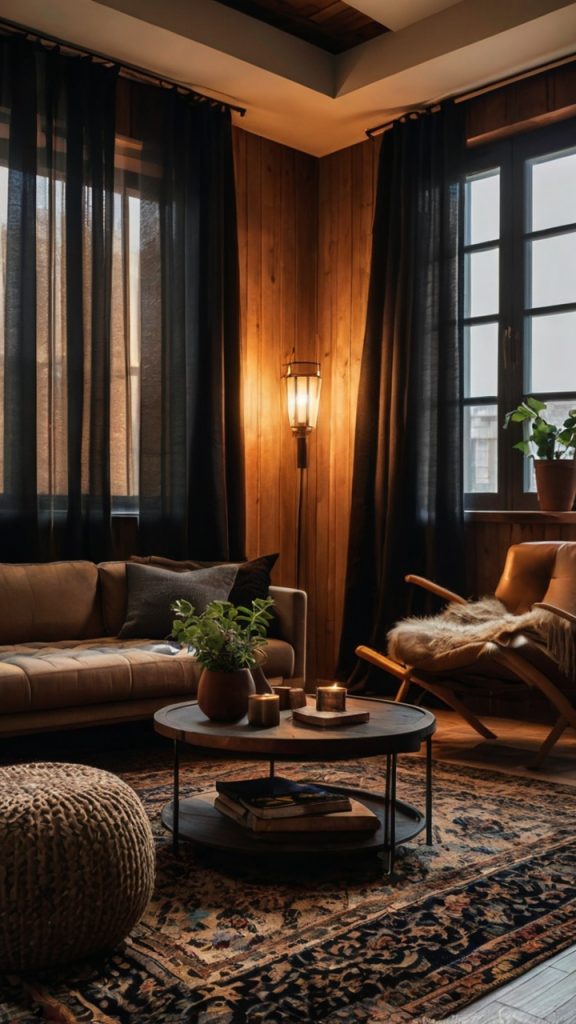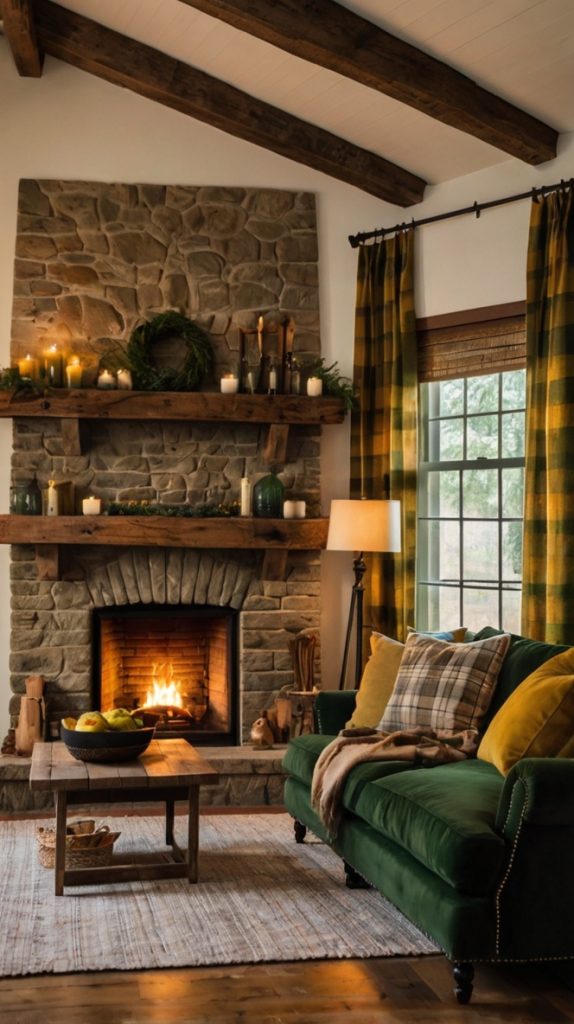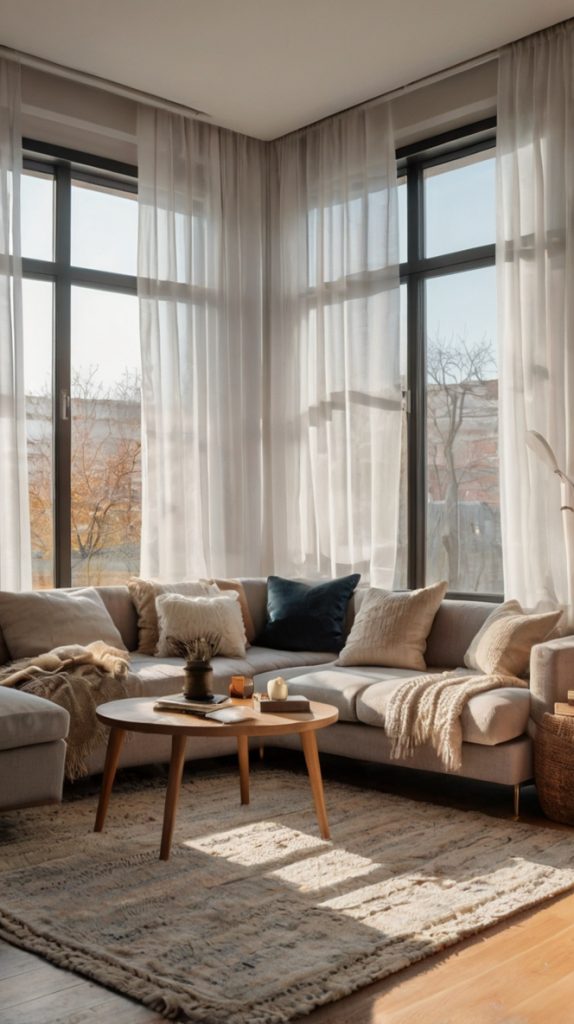10 Dining Room Decor Ideas to Elevate Your Space
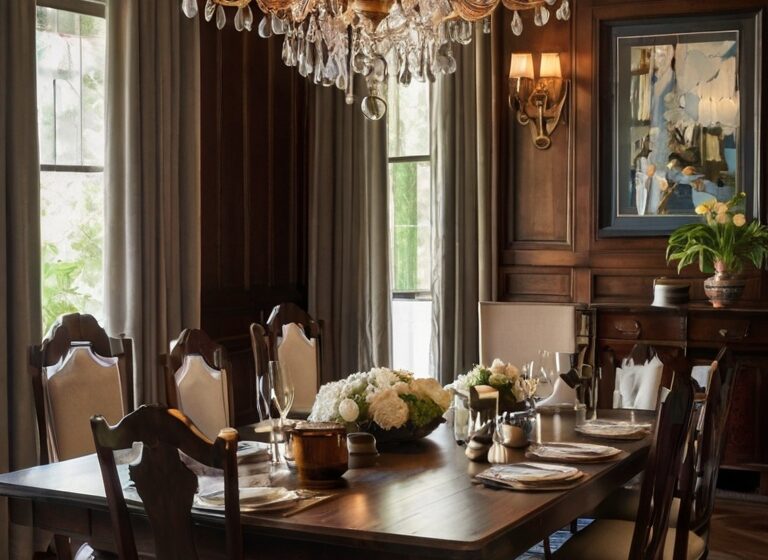
Creating a dining room that is both functional and aesthetically pleasing can transform your home into a welcoming and inviting space. Whether you are renovating your current dining area or looking to refresh it, the right decor can make a significant difference. In this comprehensive guide, we will explore 10 dining room decor ideas that can help you achieve a beautiful and functional dining space. From choosing the right furniture to adding the perfect finishing touches, these tips will provide you with the inspiration you need to create a dining room that reflects your personal style and enhances your daily life.
1. Choose the Right Dining Table

Selecting the Perfect Table
The dining table is the centerpiece of your dining room, and choosing the right one is crucial. Consider the size and layout of your space when selecting a table. For smaller rooms, a round or oval table can help maximize space and create a more intimate setting. In larger rooms, a rectangular or square table can provide ample seating and a more formal feel. When choosing a table, also consider the material. Wood, glass, and metal are popular choices, each offering a unique aesthetic and durability.
Table Size and Seating
Ensure that the table you choose fits comfortably in your dining room and allows for adequate seating. A general rule of thumb is to leave at least 36 inches of clearance around the table for easy movement. If you have a small dining room, consider a drop-leaf or extendable table that can be adjusted to accommodate different numbers of guests. For larger rooms, a larger table can be a focal point and provide plenty of space for family gatherings and dinner parties.
Table Style and Material
The style and material of your dining table should complement the overall decor of your dining room. If you have a modern or contemporary dining room, a sleek glass or metal table can enhance the look. For a more traditional or rustic setting, a wooden table with ornate details can add warmth and character. Consider the maintenance and durability of the material, especially if you have young children or pets.
Also Read: 10 Coffee Bar Ideas for Your Home
2. Select Comfortable and Stylish Chairs
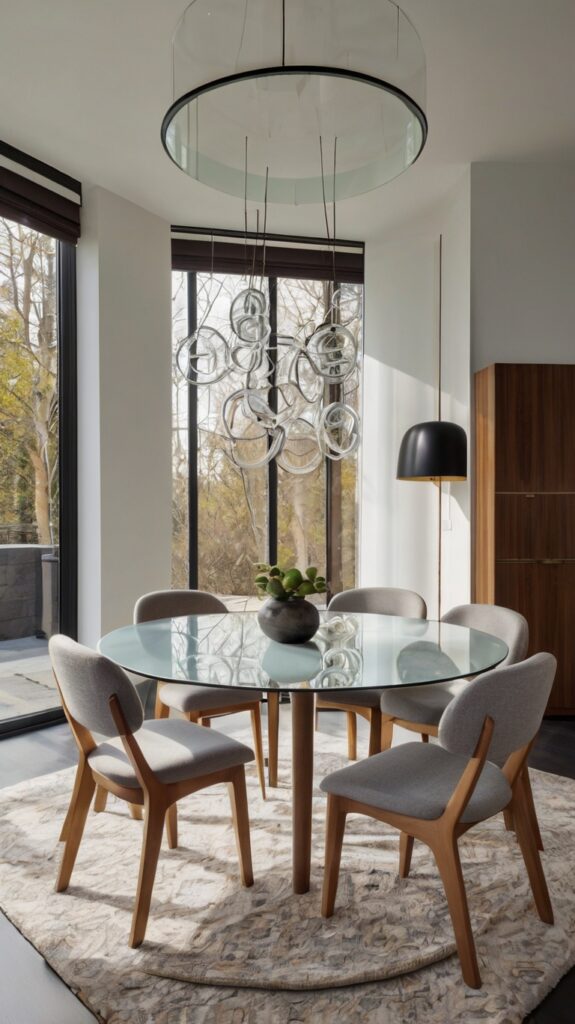
Chair Comfort and Design
Comfortable chairs are essential for a dining room that is both functional and inviting. Look for chairs that provide good support and are easy to sit in for extended periods. The design of the chairs should complement the style of your table and the overall decor of the room. Upholstered chairs can add a touch of luxury and comfort, while wooden or metal chairs can provide a more minimalist look.
Chair Variety and Mix-and-Match
Don’t be afraid to mix and match different styles of chairs to create a unique and personalized look. For example, you could pair a set of upholstered chairs with a couple of wooden or metal accent chairs. This approach can add visual interest and make your dining room stand out. If you have a large dining table, consider using a mix of chairs to create a more dynamic and inviting setting.
Chair Height and Spacing
Ensure that the height of your chairs is appropriate for your table. The seat of the chair should be about 12 inches below the tabletop to allow for comfortable dining. When arranging your chairs, leave enough space between them to allow for easy movement and to prevent the room from feeling cluttered.
3. Add a Statement Chandelier

Lighting as a Focal Point
A statement chandelier can transform your dining room and add a touch of elegance and sophistication. Choose a chandelier that complements the style of your dining room and provides ample lighting. For a modern or contemporary setting, a sleek and minimalist chandelier can be a perfect choice. For a more traditional or romantic setting, a chandelier with intricate details and warm lighting can create a cozy and inviting atmosphere.
Chandelier Size and Placement
The size of your chandelier should be proportional to the size of your dining room and table. A large chandelier can overwhelm a small room, while a small chandelier may get lost in a large space. As a general rule, the chandelier should be about one-quarter to one-third the width of your dining table. The chandelier should be hung at a height that allows for comfortable dining, typically about 30 to 36 inches above the table.
Chandelier Style and Finish
The style and finish of your chandelier should complement the overall decor of your dining room. If you have a neutral color palette, a chandelier with a bold finish, such as gold or brass, can add a pop of color and shine. For a more understated look, a chandelier with a matte or brushed finish can provide a subtle yet elegant touch.
4. Incorporate Warm and Inviting Lighting
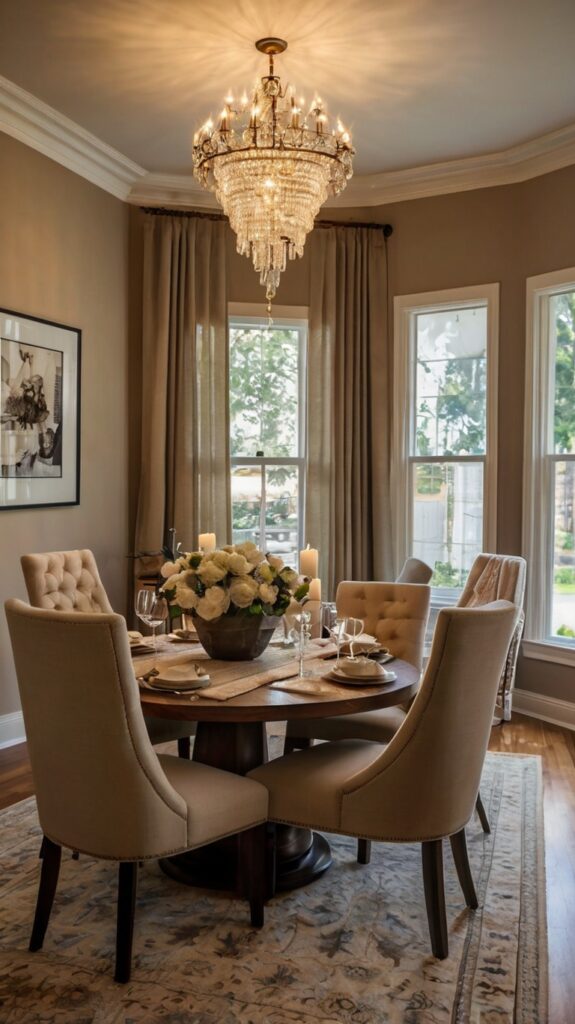
Layered Lighting
In addition to a statement chandelier, incorporating layered lighting can enhance the ambiance of your dining room. Use a combination of overhead, ambient, and task lighting to create a well-lit and inviting space. Overhead lighting, such as recessed lights or a ceiling fan with a light, can provide general illumination. Ambient lighting, such as wall sconces or floor lamps, can add a warm and cozy feel. Task lighting, such as under-cabinet lights or a dimmable chandelier, can be useful for meal preparation and dining.
Dimmable Lighting
Investing in dimmable lighting can allow you to adjust the mood and brightness of your dining room. Dimmable switches can be installed on chandeliers, recessed lights, and other lighting fixtures. This feature can be particularly useful for creating a romantic setting for dinner parties or a more relaxed atmosphere for family meals.
Natural Light
Maximize natural light by using light-colored curtains or blinds that allow sunlight to filter into the room. Natural light can make your dining room feel more spacious and inviting. If your dining room has limited natural light, consider using mirrors to reflect and amplify the available light.
5. Choose the Right Wall Color
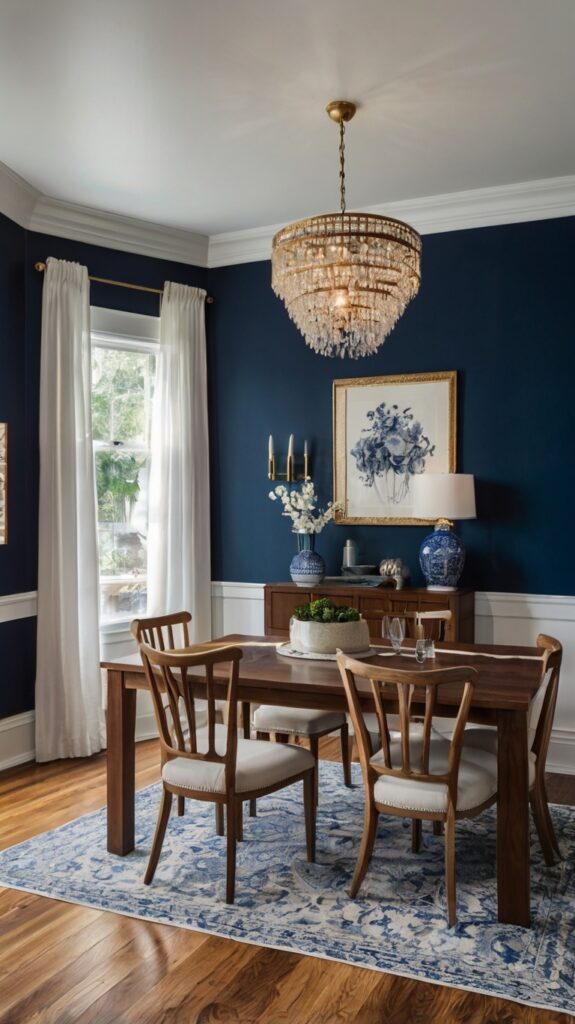
Color Psychology
The color of your dining room walls can significantly impact the mood and atmosphere of the space. Warm colors, such as red, orange, and yellow, can create a welcoming and energetic environment. Cool colors, such as blue, green, and purple, can provide a calm and relaxing setting. Neutral colors, such as white, gray, and beige, can create a timeless and sophisticated look.
Accent Walls
If you want to add a bold touch to your dining room, consider creating an accent wall. An accent wall can be painted a different color or decorated with wallpaper to draw attention and add visual interest. Choose a color or pattern that complements the rest of your decor and enhances the overall look of the room.
Wall Paint and Finish
When choosing paint for your dining room, consider the finish. Flat or matte finishes can hide imperfections and provide a smooth, elegant look. Satin or eggshell finishes can add a subtle sheen and are easy to clean, making them ideal for high-traffic areas. Glossy finishes can create a more dramatic and reflective look but may show imperfections more easily.
Also Read: 10 Coffee Bar Ideas for Party: Elevate Your Social Gatherings
6. Add a Refined Rug
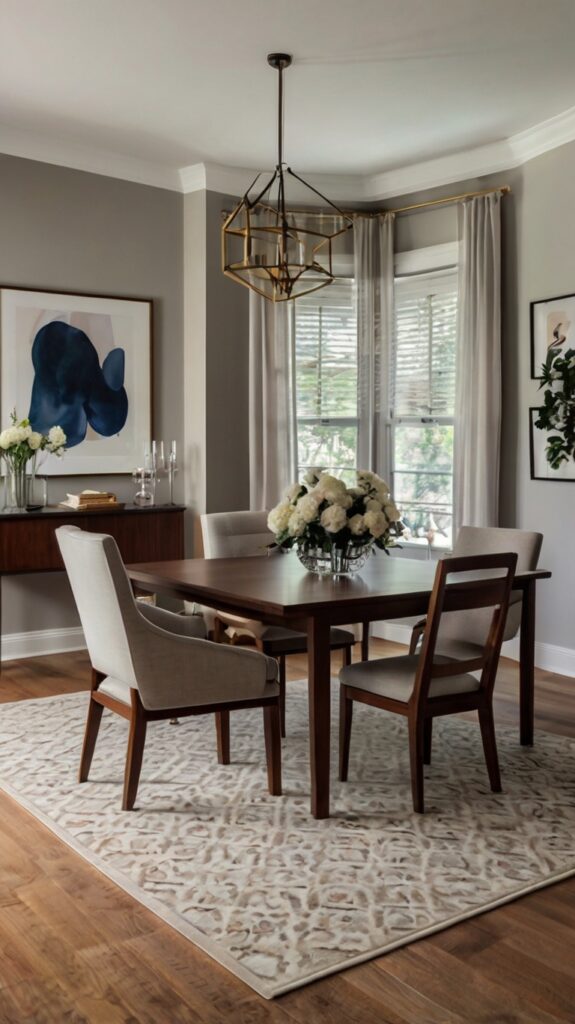
Rug Placement
A rug can add warmth, texture, and color to your dining room. Place a rug under your dining table to anchor the space and create a cohesive look. The rug should be large enough to fit all the chairs when they are pulled out from the table. A general rule of thumb is to choose a rug that is at least 24 inches wider than your dining table on all sides.
Rug Material and Style
The material and style of your rug should complement the overall decor of your dining room. For a modern or contemporary setting, a simple and sleek rug with a neutral color or geometric pattern can be a perfect choice. For a more traditional or rustic setting, a rug with intricate details and a rich color palette can add warmth and character.
Rug Maintenance
Choose a rug that is easy to clean and maintain, especially if you have young children or pets. Rugs made from natural fibers, such as wool or cotton, can be durable and easy to clean. Synthetic rugs, such as those made from nylon or polyester, can also be a practical and affordable option.
7. Decorate with Art and Accessories

Wall Art
Decorating your dining room with art can add personality and visual interest to the space. Choose artwork that complements the style and color palette of your dining room. Large-scale pieces can make a statement and draw attention, while smaller pieces can be grouped together to create a gallery wall. Consider framing your artwork in a style that matches the overall decor of the room.
Decorative Accessories
Small decorative accessories, such as vases, candle holders, and picture frames, can add a personal touch to your dining room. Place these items on a sideboard, buffet, or mantel to create a focal point and enhance the overall look of the room. Choose accessories that reflect your personal style and complement the existing decor.
Seasonal Decor
Incorporate seasonal decor to keep your dining room feeling fresh and up-to-date. For example, you could add a fall-themed centerpiece with pumpkins and leaves during the autumn months, or a winter-themed wreath during the holiday season. Seasonal decor can add a touch of personality and make your dining room feel more connected to the outside world.
8. Create a Cozy and Functional Sideboard
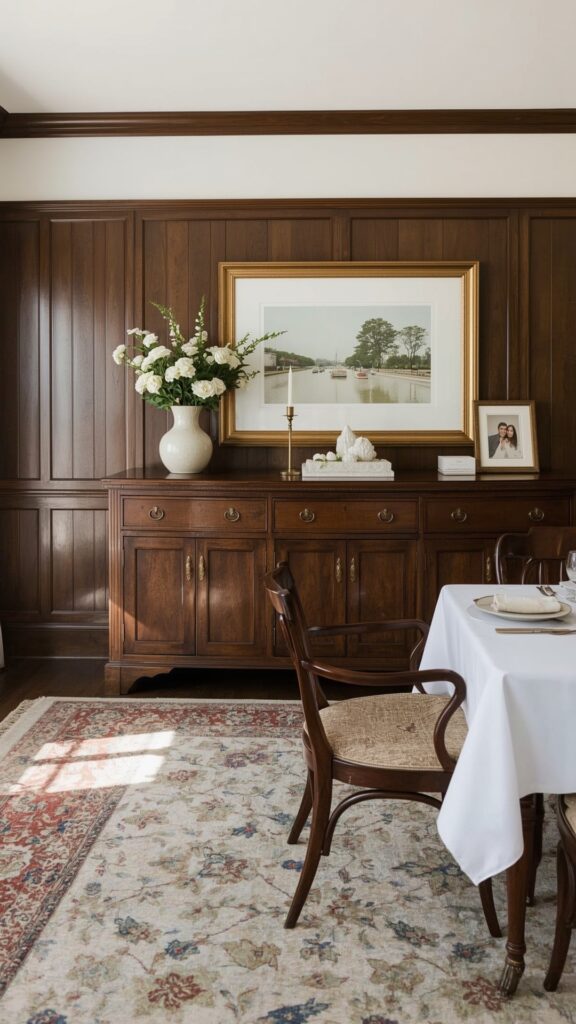
Sideboard Functionality
A sideboard can provide additional storage and display space in your dining room. Use a sideboard to store table linens, dishes, and other dining essentials. A sideboard can also serve as a display area for artwork, decorative accessories, and family photos. Choose a sideboard that is both functional and stylish, with drawers and shelves that meet your storage needs.
Sideboard Style
The style of your sideboard should complement the overall decor of your dining room. For a modern or contemporary setting, a sleek and minimalist sideboard can be a perfect choice. For a more traditional or rustic setting, a sideboard with ornate details and a rich wood finish can add warmth and character.
Sideboard Placement
Place your sideboard in a location that is both functional and visually appealing. A sideboard can be placed against a wall, in a corner, or as a focal point in the room. Ensure that the sideboard does not obstruct the flow of traffic and is easily accessible for storing and retrieving items.
9. Use Textiles to Add Comfort and Style
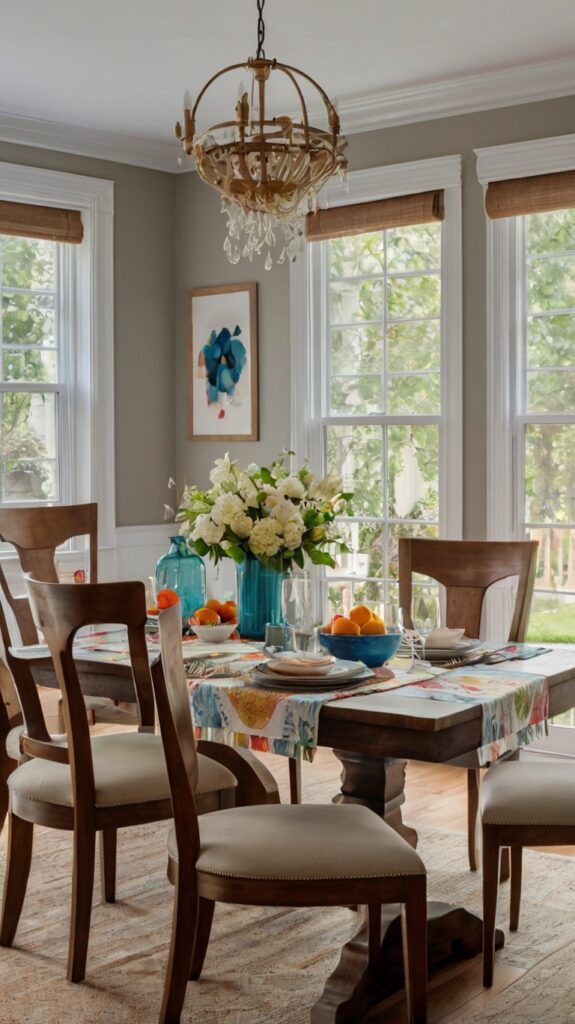
Table Linens
Table linens can add a touch of elegance and comfort to your dining room. Choose tablecloths, placemats, and napkins that complement the style and color palette of your dining room. For a formal setting, a crisp white tablecloth with elegant napkins can create a sophisticated look. For a more casual setting, a colorful table runner or placemats can add a pop of color and personality.
Window Treatments
Window treatments can enhance the look and functionality of your dining room. Choose curtains or blinds that complement the style and color palette of your dining room. Light-colored curtains can allow natural light to filter into the room, while darker curtains can provide privacy and reduce glare. Consider using layered window treatments, such as sheer curtains and drapes, to create a more dynamic look.
Throw Pillows and Blankets
Add comfort and style to your dining room with throw pillows and blankets. Place a few throw pillows on your dining chairs or a cozy throw blanket on a side chair to create a more inviting and comfortable setting. Choose pillows and blankets in colors and patterns that complement the existing decor of your dining room.
Also Read: 10 Stunning Fall Ceiling Designs to Transform Your Living Room
10. Personalize Your Dining Room

Personal Touches
Adding personal touches to your dining room can make it feel more connected to you and your family. Display family photos, heirlooms, and other meaningful items to create a space that reflects your personal style and history. Personal touches can also make your dining room feel more welcoming and inviting to guests.
Themed Decor
Consider creating a themed dining room that reflects your interests or hobbies. For example, if you love travel, you could decorate your dining room with maps, globes, and travel-themed artwork. If you enjoy cooking, you could display your favorite cookbooks and kitchen tools. Themed decor can add a unique and personal touch to your dining room.
DIY Projects
Engage in DIY projects to add a personal touch to your dining room. Create your own wall art, refurbish old furniture, or sew your own table linens. DIY projects can be a fun and rewarding way to customize your dining room and make it feel truly unique.
Conclusion
Creating a beautiful and functional dining room is a rewarding project that can enhance your daily life and bring joy to your family and guests. By choosing the right dining table, comfortable chairs, statement lighting, and a variety of decor elements, you can create a dining room that reflects your personal style and meets your functional needs. Whether you have a small or large dining room, the right decor can help you maximize the space and create a cozy, inviting environment. Use these 10 dining room decor ideas to inspire your next home renovation project and transform your dining room into a space that you and your loved ones will cherish for years to come.
